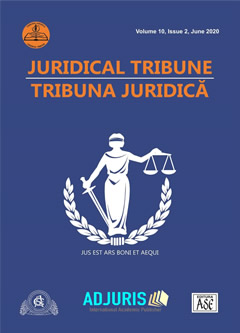Comparative planetology as a foundation for associating space law with solar geoengineering governance: stratospheric aerosol injection and variations of sulfur dioxide in Venus’s atmosphere
Comparative planetology as a foundation for associating space law with solar geoengineering governance: stratospheric aerosol injection and variations of sulfur dioxide in Venus’s atmosphere
Author(s): Bekim Nuhija, Stefani Stojchevska, Adnan Jashari, Arta Selmani-BakiuSubject(s): International Law, Law and Transitional Justice, Environmental interactions
Published by: Societatea de Stiinte Juridice si Administrative
Keywords: space law; comparative planetology; solar geoengineering; legislation; climate change; stratospheric aerosol injection;
Summary/Abstract: Mankind often seeks solutions to climate change and environmental crises, but rarely considers the feasibility of outer space to overcome such critical issues. Among many solar geoengineering approaches is stratospheric aerosol injection (SAI) whose concept suggests artificial control of the global temperature by spreading tones of sulfur dioxide into Earth’s stratosphere. Given that the classic ‘technology control dilemma’ represents the central problem of solar geoengineering governance, however, this paper adopts a Venus Earth comparative planetology method by addressing volcanology and atmospheric circulation aspects. An international regulatory framework engaging space law in solar geoengineering governance is consequently presented, which classifies two separate legislations: (1) research-based legislation (comparative planetology and Earth science) and (2) non-research-based legislation (national and international governance, ethical issues, economic factors, military utilization). Further highlighting climate change issues, SAI manifests the Anthropocene and regards Earth’s stratosphere as an “inner environment”, while comparative planetology manifests the Anthropocosmos and regards space as an “outer environment”. This polymorphous consideration of atmospheric and space elements identifies a new approach of climate change techniques. Human relations that concern both environments should examine how social scientists would regard these separate boundaries or perceive them as a mergence between the two major epochs.
Journal: Tribuna Juridică
- Issue Year: 12/2022
- Issue No: 3
- Page Range: 412-427
- Page Count: 16
- Language: English

